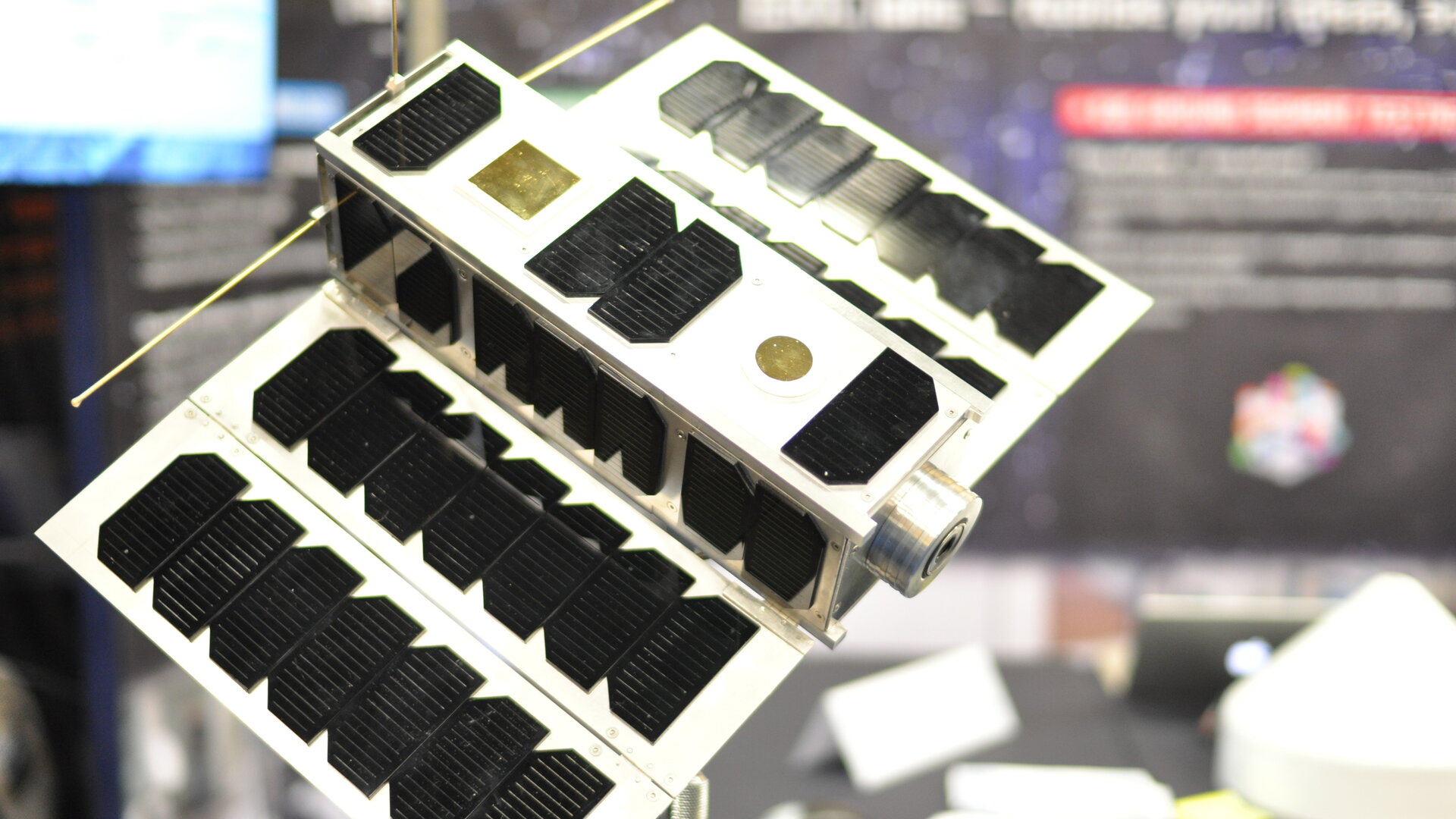Europe Challenges Amateurs to be the First to Catch a Signal From Brand New Satellite
ESA is looking for your help!

Are you a passionate, space-loving radio amateur? You could be the first to catch a signal from the European Space Agency's (ESA) brand new experimental satellite.
Next week (Dec. 17), ESA will be launching OPS-SAT, a new cubesat, on a Soyuz rocket from Kourou, French Guiana. The satellite will launch with ESA’s Cheops exoplanet-tracker. After it reaches space, OPS-SAT will deploy its solar panels and ultra-high frequency antenna. It will then start signals back home to Earth.
It is then that radio amateurs will have an opportunity to catch the first signals from this small satellite and find it out in the cosmos, per a request from ESA’s mission control team in Darmstadt, Germany.
Related: Cubesats: Tiny, Versatile Spacecraft Explained (Infographic)
At only about a foot (30 cm) high, OPS-SAT is the first of its kind — a cubesat designed explicitly for experimentation. The satellite is kind of like a space-based science playground. It will carry a computer ten times more powerful than any other on an ESA spacecraft, a high-resolution camera, radio equipment and more.
"Experimenters" can use these onboard tools to test software and apps. Investigations that are currently planned for the little cubesat include experiments that:
- Quickly process images of Earth in-flight using neural networks and deep learning technology to make it easier and faster to detect and monitor events like forest fires.
- Control rovers remotely. OPS-SAT would function as a mid-way point between people communicating from Earth and the rover in a separate location.
- Test the idea of running a completely automated space mission using artificial intelligence.
- Use a programmable radio receiver to measure interference in communications with other spacecraft.
- Investigate the idea of using laser light to transmit data securely.
Now, not only is ESA inviting radio amateurs to get involved with OPS-SAT, the agency has also opened up the opportunity for anyone to apply to become an "experimenter." If you want to utilize OPS-SAT, you can apply and learn more here.
Get the Space.com Newsletter
Breaking space news, the latest updates on rocket launches, skywatching events and more!
- Indian Satellites Soar in PSLV Rocket Launch
- Success of Mars Probes Heralds New Era of Deep-Space Cubesats
- This Farewell Photo of Mars by a Cubesat Is Absolutely Amazing
Follow Chelsea Gohd on Twitter @chelsea_gohd. Follow us on Twitter @Spacedotcom and on Facebook.

Join our Space Forums to keep talking space on the latest missions, night sky and more! And if you have a news tip, correction or comment, let us know at: community@space.com.

Chelsea “Foxanne” Gohd joined Space.com in 2018 and is now a Senior Writer, writing about everything from climate change to planetary science and human spaceflight in both articles and on-camera in videos. With a degree in Public Health and biological sciences, Chelsea has written and worked for institutions including the American Museum of Natural History, Scientific American, Discover Magazine Blog, Astronomy Magazine and Live Science. When not writing, editing or filming something space-y, Chelsea "Foxanne" Gohd is writing music and performing as Foxanne, even launching a song to space in 2021 with Inspiration4. You can follow her on Twitter @chelsea_gohd and @foxannemusic.









